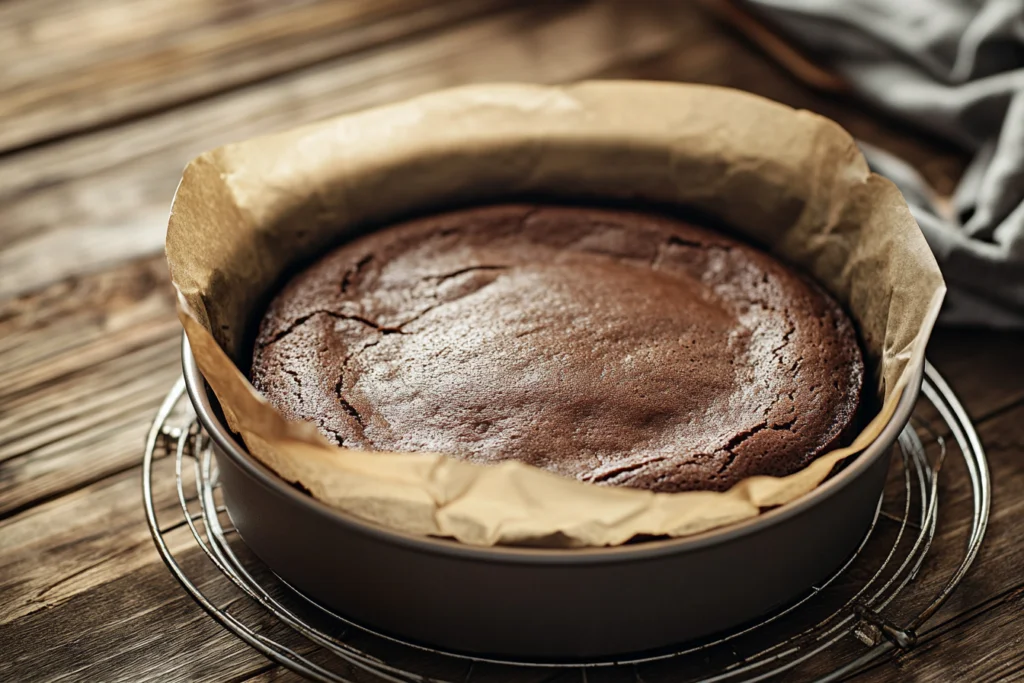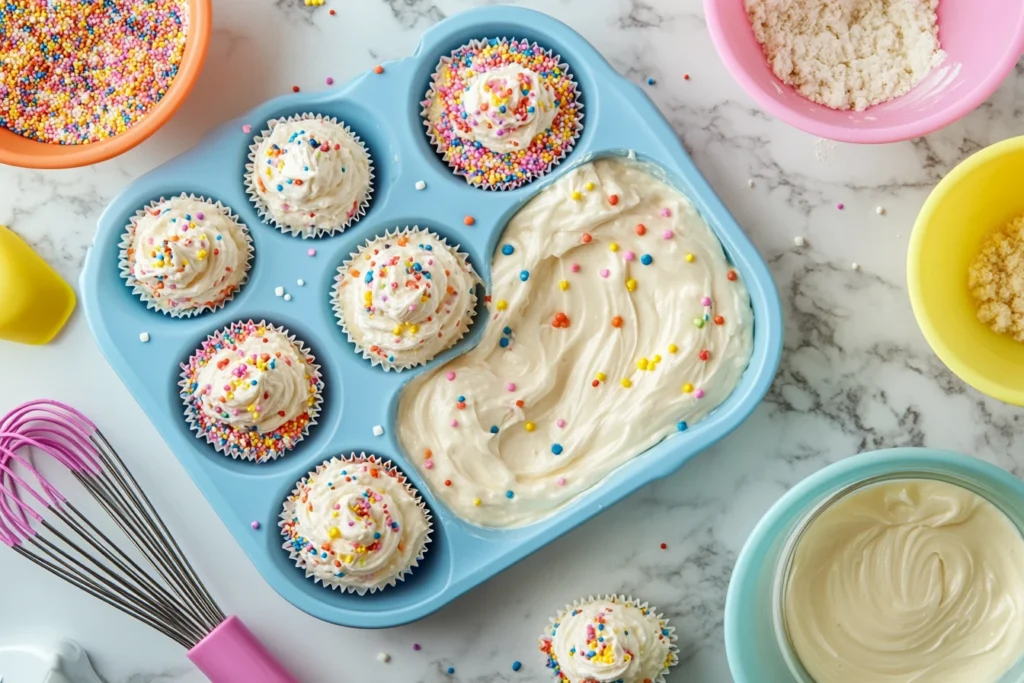1. Introduction to Cake Pan
Cake pan are essential tools in baking, serving as the foundation for creating cakes of all shapes and sizes. These pans are designed to handle high temperatures, ensuring cakes bake evenly while maintaining their structure.
Selecting the right cake pan can make a significant difference in the texture, appearance, and overall outcome of baked goods. From classic round pans to intricate bundt molds, the variety available caters to different recipes and preferences.
This article explores the history, types, materials, and best practices for using and maintaining cake pans. Whether you’re a beginner baker or an experienced pastry chef, understanding the different options will help you achieve the best results in every baking project.
2. History and Evolution of Cake Pan
Cake pans have played a crucial role in baking traditions, evolving over time to meet the demands of modern kitchens. Their journey from basic clay molds to sophisticated non-stick designs highlights advancements in technology and baking techniques.
2.1 Early Baking Tools
Early bakers used clay and stone molds to create simple baked goods. These primitive tools required high-maintenance preparation, such as greasing and flouring to prevent sticking. Over time, metals like copper and iron replaced clay due to their durability and ability to conduct heat more effectively.
By the 19th century, tin-plated steel became popular as a lightweight and affordable option. Bakers began experimenting with different shapes, giving rise to molds that reflected decorative and cultural preferences.
2.2 Modern Innovations
The introduction of aluminum and non-stick coatings in the 20th century transformed baking. Aluminum’s lightweight design and even heat distribution made it a go-to material for home bakers. Silicone pans, introduced later, offered flexibility and ease of cleaning, making baking more convenient.
Today, cake pans are available in various shapes, sizes, and materials, each suited for specific recipes. From springform pans for cheesecakes to bundt pans for intricate designs, modern innovations have made baking accessible and enjoyable.
3. Types of Cake Pan
Cake pans come in a wide range of shapes and sizes, each designed for specific baking needs. From classic round pans for layered cakes to novelty pans for themed events, these tools offer endless possibilities for creativity in baking.
3.1 Round Cake Pan

Round cake pans are among the most commonly used options for baking. They are ideal for layered cakes, birthday cakes, and wedding cakes. These pans typically have straight sides, ensuring uniform edges that make stacking layers easier.
Round pans come in various sizes, with eight- and nine-inch diameters being the most popular. They are perfect for sponge cakes, cheesecakes, and mousse-based desserts.
3.2 Square and Rectangular Cake Pan
Square and rectangular pans are versatile and widely used for sheet cakes, brownies, and bar desserts. Their straight edges make it easy to cut evenly sized pieces, which is great for serving at events and gatherings.
Rectangular pans are often used for layered sheet cakes, while square pans are suitable for smaller servings or compact recipes. They are also ideal for baking casseroles and savory dishes, adding to their multifunctionality.
3.3 Springform Cake Pan
Springform pans are designed with removable sides, making them ideal for delicate cakes that cannot be inverted, such as cheesecakes and tortes. The latch on the side allows the pan to expand, making it easier to remove the baked goods without damaging their structure.
These pans are especially useful for recipes that require careful handling, ensuring cakes maintain their shape and presentation.
3.4 Bundt Cake Pan
Bundt pans are known for their decorative designs and central tube, which promotes even baking. They are often used for pound cakes, coffee cakes, and other dense desserts.
The intricate shapes create visually appealing patterns, eliminating the need for elaborate decorations. Proper greasing is essential to prevent sticking due to the detailed designs.
3.5 Specialty Shapes and Novelty Pans
Specialty and novelty pans are perfect for themed celebrations, birthdays, and holidays. Options include heart-shaped pans, mini-cake molds, and character-themed designs. For more dessert inspiration, check out these chocolate bar recipes that pair beautifully with creative pan shapes.
These pans allow bakers to create visually unique desserts that stand out during events, offering both fun and creativity.
4. Materials Used in Cake Pan
Cake pans are available in various materials, each offering unique benefits for baking. The choice of material affects heat distribution, durability, and ease of cleaning, making it essential to select the right one for your baking needs.
4.1 Aluminum
Aluminum cake pans are lightweight, affordable, and excellent at conducting heat. They allow cakes to bake evenly, preventing undercooked centers or over-baked edges.
Non-stick aluminum pans provide added convenience, reducing the need for excessive greasing or flouring. Anodized aluminum versions are more durable and resistant to corrosion, ensuring a longer lifespan.
While aluminum pans perform well, they may be prone to scratching and denting, so proper care is necessary to maintain their quality.
4.2 Stainless Steel
Stainless steel cake pans are highly durable and resistant to rust and scratches. They offer a polished appearance and do not react with acidic ingredients, making them ideal for recipes that contain citrus or vinegar.
However, stainless steel is not as effective as aluminum in conducting heat, which may lead to longer baking times or uneven cooking. Using these pans often requires additional preparation, such as preheating and adjusting baking times.
4.3 Silicone Pans

Silicone cake pans are flexible, non-stick, and easy to clean. Their ability to withstand high temperatures makes them a practical choice for modern bakers. These pans are especially useful for molded cakes, as their flexibility ensures easy removal without damaging the design.
Despite their advantages, silicone pans may not provide the same crisp edges as metal pans. They also require careful handling to avoid spills, as their structure is softer than traditional metal pans.
4.4 Glass and Ceramic Pans
Glass and ceramic cake pans are versatile options for baking and serving. Their elegant appearance allows bakers to present desserts directly from the oven to the table.
These materials retain heat well, keeping cakes warm even after baking. However, their slower heat conduction means cakes may require longer baking times. Glass and ceramic pans also need careful handling to avoid cracking due to sudden temperature changes.
5. Choosing the Right Cake Pan
Selecting the right cake pan can make a significant difference in baking outcomes. Factors like size, material, and design impact how cakes bake, rise, and release from the pan. Here’s a detailed guide to help make the best choice.
5.1 Factors to Consider
Size and Capacity
Cake pans come in various sizes, and recipes often specify the dimensions required. Using the wrong size can lead to overflow or flat cakes, so it’s important to match the pan size with the recipe instructions. For more details on choosing the right pan, check out this cake pan guide on Serious Eats.
Shape and Design
The shape of the pan influences not only the appearance of the cake but also its baking time. For example, bundt pans bake more quickly because their center tube distributes heat evenly, while deep round pans may require longer baking times.
Versatility
Opting for versatile designs, such as springform pans, allows bakers to handle delicate recipes without damaging the structure. Multi-purpose pans, such as square and rectangular options, are also ideal for both baking and savory dishes.
5.2 Comparing Materials
Heat Distribution
Aluminum pans excel at conducting heat, ensuring even baking, while silicone pans focus more on ease of release. Stainless steel offers durability but may require longer baking times due to slower heat conduction.
Ease of Cleaning
Non-stick coatings simplify cleanup, although they may wear off over time. Silicone pans are dishwasher-safe, making them a low-maintenance choice. Glass and ceramic pans, while visually appealing, may need soaking to remove baked-on residues.
Durability and Longevity
Anodized aluminum and stainless steel pans are highly durable, resisting scratches and rust. Silicone pans are less likely to warp, but their flexible structure may not support heavier cakes as effectively as metal options.
5.3 Budget-Friendly vs. Premium Options
Budget-friendly cake pans are great for beginners, offering functionality without a high price tag. However, investing in premium pans can improve long-term performance. Features like thicker construction, non-stick coatings, and removable bases justify higher costs for frequent bakers.
High-quality brands often provide better heat retention and even baking, reducing the risk of uneven cakes. For bakers who frequently create layered or decorative cakes, premium options can enhance presentation and convenience.
6. Baking Tips for Perfect Results
Achieving perfect results with cake pans requires more than just selecting the right pan. Proper preparation, baking techniques, and troubleshooting can make all the difference in producing evenly baked, visually appealing cakes.
6.1 Preparing Cake Pans
Greasing and Flour Coating
To prevent sticking, thoroughly grease the pan with butter or oil, followed by a light dusting of flour. For cakes with intricate designs, such as bundt pans, extra care is needed to coat every detail.
Parchment Paper Liners
Using parchment paper on the base of the pan ensures easy removal of cakes, especially for delicate recipes like sponge cakes. Pre-cut liners are available for round and square pans, simplifying preparation.
Non-Stick Sprays
Bakers can use baking sprays that combine oil and flour for convenience. However, avoid excessive spraying to prevent buildup on non-stick coatings.
6.2 Temperature and Timing
Preheating the Oven
Always preheat the oven before baking to ensure even heat distribution. Placing cake batter in a cold oven can lead to uneven rising and dense textures.
Adjusting Baking Times
Different materials and shapes affect baking times. Metal pans typically bake faster than glass or ceramic ones. Check cakes a few minutes before the suggested baking time to avoid overbaking. If you’re interested in recipes that rely on precise timing, try this Southern Cornbread Recipe for an example of a quick and easy bake.
Positioning in the Oven
Place the pan on the center rack for optimal heat circulation. Avoid crowding the oven with multiple pans, as it may block airflow and lead to uneven baking.
6.3 Troubleshooting Common Issues
Uneven Baking
If cakes bake unevenly, rotate the pan halfway through baking or use an oven thermometer to ensure consistent heat.
Sticking to the Pan
Allow the cake to cool for 10–15 minutes before attempting to remove it. Run a knife around the edges to loosen the cake if needed.
Sinking Centers
Cakes may sink due to overmixing the batter or underbaking. Use the toothpick test to check doneness—insert a toothpick into the center, and if it comes out clean, the cake is ready.
7. Cleaning and Maintenance of Cake Pan
Proper cleaning and maintenance of cake pans are essential for preserving their quality and extending their lifespan. Whether using non-stick, silicone, or metal pans, following the right cleaning methods can prevent damage and ensure consistent baking results.
7.1 Proper Cleaning Techniques
Handwashing vs. Dishwasher
While many modern cake pans are labeled dishwasher-safe, handwashing is often recommended to preserve coatings and prevent scratches. Use warm water, mild soap, and a soft sponge to clean pans immediately after use.
Removing Stubborn Residue
For baked-on residue, soak the pan in warm soapy water for 15–20 minutes to loosen particles. Avoid abrasive scrubs or metal brushes, as they can damage non-stick surfaces. Instead, use a plastic scraper or nylon brush.
Cleaning Silicone Pans
Silicone pans require gentle washing to avoid residue buildup. Occasionally boiling silicone molds in water can help remove greasy layers that soap might miss.
7.2 Storage Tips
Avoid Stacking Without Protection
Stacking metal pans directly on one another can lead to scratches and dents. Place a layer of parchment paper or a cloth between pans to protect the surface.
Dry Thoroughly Before Storing
Always dry pans completely before storing to prevent rust, especially for aluminum and stainless steel pans. Silicone pans should also be dried thoroughly to avoid mold growth.
Vertical Storage Options
For small kitchens, vertical storage racks can keep pans organized and easily accessible while protecting their surfaces.
7.3 Extending the Lifespan
- Avoid using sharp utensils inside pans to prevent scratches.
- Use silicone or wooden tools when cutting cakes directly in the pan.
- Regularly inspect non-stick coatings for chips or scratches and replace damaged pans to avoid food contamination.
8. Frequently Asked Questions (FAQs) About Cake Pan
8.1 What Size Cake Pan Should I Use for Specific Recipes?
The size of the cake pan depends on the recipe. Most standard recipes use 8-inch or 9-inch round pans. For sheet cakes, a 9×13-inch rectangular pan is common. Always check the recipe instructions to ensure the correct size for even baking.
8.2 How Do I Prevent Cakes from Sticking to the Pan?
To prevent sticking, grease the pan with butter or oil and dust it lightly with flour. Alternatively, line the bottom with parchment paper or use a non-stick baking spray for easy release.
8.3 Can I Substitute One Cake Pan Shape for Another?
Yes, but adjustments may be required. For example, a square pan can often be substituted for a round pan of similar volume, though baking times may vary. Use an online baking pan conversion chart to ensure the correct size and measurements.
8.4 Are Silicone Cake Pans Better Than Metal Ones?
Silicone pans are non-stick and easy to clean but may lack the structural support that metal pans provide. Metal pans, especially aluminum, are preferred for even heat distribution, while silicone pans are ideal for intricate molds and flexible designs.
8.5 How Do I Adjust Baking Time for Different Pan Sizes?
Thicker or deeper pans may require additional baking time, while shallow pans bake faster. Reduce oven temperature slightly and monitor cakes closely when switching to a different pan size.
9. Conclusion
Cake pans are essential tools in baking, offering a variety of options to suit different recipes, preferences, and baking techniques. From traditional round pans for layered cakes to specialty bundt molds for decorative designs, the right pan can make all the difference in baking results.
Understanding the materials, shapes, and sizes of cake pans helps bakers make informed choices, ensuring even baking and beautiful presentations. Proper cleaning and storage extend the life of these tools, making them reliable companions in the kitchen.
Whether you’re a beginner baker or an experienced pastry enthusiast, investing in high-quality cake pans and following the tips in this guide will help you achieve perfect results every time.
